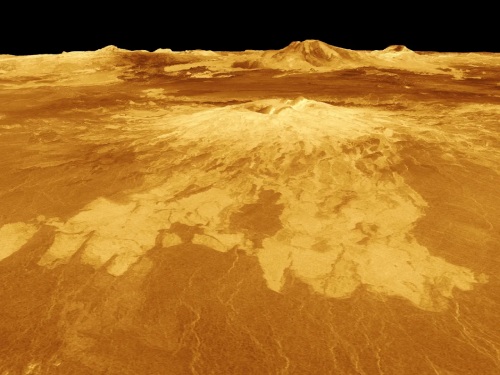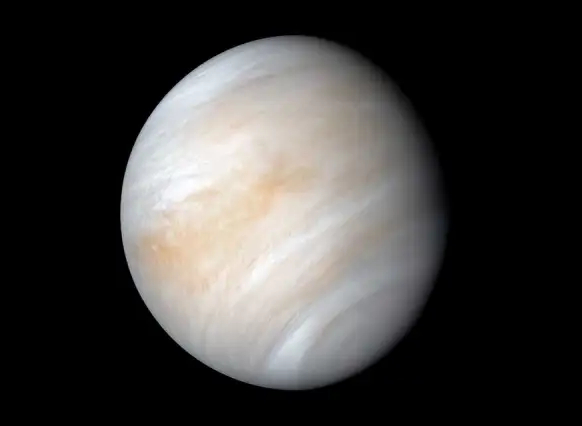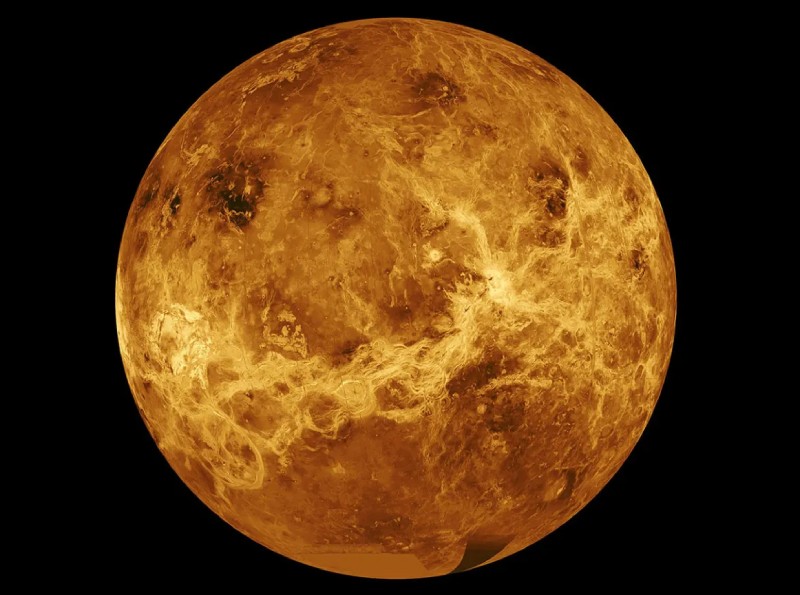Venus is the second planet from the Sun in our solar system, orbiting it every 224.7 Earth days. It is named after the Roman goddess of love and beauty. Venus is often called Earth’s “sister planet” due to its similar size, composition, and proximity to Earth. However, despite these similarities, Venus is a very different world. Here are some key characteristics of Venus:
Size and Distance from the Sun
Venus has a diameter of approximately 12,104 kilometers (7,521 miles). This makes it roughly 95% of the diameter of Earth, making it the second-largest terrestrial planet in our solar system after Earth.
The average distance between Venus and the Sun is about 108.2 million kilometers (67.2 million miles). This distance can vary slightly due to Venus’s elliptical orbit around the Sun. It takes Venus about 224.7 Earth days to complete one orbit around the Sun.
Orbital Period and Rotation
Venus rotates very slowly, taking about 243 Earth days to complete one rotation on its axis. Additionally, Venus rotates in the opposite direction to most other planets, a phenomenon known as retrograde rotation. It orbits the Sun once every 224.7 days.
Atmosphere
Venus has a thick atmosphere composed mainly of carbon dioxide, with clouds of sulfuric acid. This dense atmosphere creates a strong greenhouse effect, trapping heat and making Venus the hottest planet in the solar system, with surface temperatures reaching about 470 degrees Celsius (880 degrees Fahrenheit).

Surface Features
The surface of Venus is rocky and covered in vast plains, mountains, and volcanoes. It has relatively few impact craters compared to other planets, suggesting significant geological activity. The surface is obscured by thick clouds, making it difficult to observe its features directly. However, radar imaging conducted by spacecraft has revealed large volcanic features, including vast shield volcanoes and lava flows.
Exploration
Several spacecraft have visited Venus, including the Soviet Venera missions in the 1970s and 1980s, as well as NASA’s Magellan spacecraft in the early 1990s. More recently, the European Space Agency’s Venus Express mission provided valuable data on Venus’s atmosphere and surface.
Habitability
Despite its similarities to Earth, Venus is an inhospitable world, with extreme temperatures, high atmospheric pressure, and toxic atmospheric conditions. There is currently no evidence to suggest that life exists on Venus.

Observation
The best time to observe Venus depends on its position relative to the Sun and Earth. Venus is typically visible to the naked eye as one of the brightest objects in the night sky. It is often visible in the western sky just after sunset or shortly thereafter. It is sometimes referred to as the “Evening Star” when it is visible after sunset.
At other times, Venus is visible in the eastern sky just before sunrise. When Venus appears in the morning sky, it is called the “Morning Star.” It rises before the Sun and is visible for a few hours before dawn. This period lasts for approximately 263 days. After this period, Venus becomes more aligned with the Sun in the evening sky and transitions to being predominantly visible after sunset as the “Evening Star.” This period also lasts for about 263 days.
When Venus reaches its greatest elongation (maximum separation) from the Sun, it is furthest from the Sun in the sky and is most easily observable.
Like the Moon, Venus exhibits phases as seen from Earth. Through a telescope, you can observe Venus going through phases similar to the Moon’s, ranging from a thin crescent to nearly full. Observing these phases can be particularly interesting.



